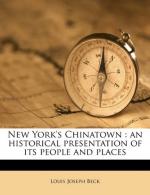|
This section contains 517 words (approx. 2 pages at 300 words per page) |

|
Sedentary People. Imperial China had a population consisting of three cultural groups: sedentary people, nomadic people, and mountain people. The sedentary people engaged primarily in agriculture. As in other parts of the world, it was agriculture that contributed to population expansion and formation of organized states. Sedentary people spread over all the plains, valleys, and fertile high plateaus of China. They grew two different kinds of crops: "dry" and "wet." "Dry" crops included cereals, barley, wheat, and different types of millet. Irrigation was irregularly practiced in "dry" areas. Despite the prevalence of agriculture in these regions, the raising of livestock, such as cattle, sheep, and horses, was comparatively significant from the seventh century onward. The major "wet" crop was rice, and its mass production originated during the Tang dynasty (618-907). This agricultural product began in the lower basin of the Yangzi (Yangtze) River and proved...
|
This section contains 517 words (approx. 2 pages at 300 words per page) |

|




